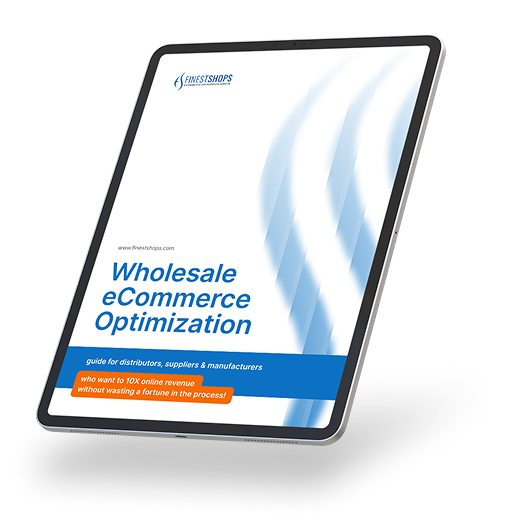In a world defined by volatility and constant innovation, organizations face a hard truth — systems built for yesterday’s needs often buckle under tomorrow’s pressures. Whether it’s evolving cybersecurity threats, sudden surges in user demand, or the race toward cloud-native operations, building a resilient IT infrastructure is now the foundation for long-term business continuity.
TL;DR
Modern businesses can’t rely on patchwork upgrades or short-term fixes.
Future-proofing your IT means:
- Building adaptable, secure, and interoperable systems
- Leveraging automation and industrial-grade edge computing
- Protecting sensitive data with smart encryption and document security
- Establishing redundancy, visibility, and disaster recovery protocols
- Choosing partners, tools, and technologies designed for scale
Scalable Support for Sustainable Growth
No company evolves alone. The right partners help businesses future-proof faster and more intelligently. For example, FinestShops specializes in managed eCommerce infrastructure — providing uptime, performance monitoring, and continuous optimization so growing brands can focus on innovation rather than maintenance.
Strategic collaborations like these allow organizations to offload complexity, ensuring infrastructure investments translate directly into operational agility and customer trust.
The Need for Resilience
Many companies learned the hard way that digital transformation isn’t just about adopting new tools—it’s about architecting for durability. Downtime, data breaches, and system incompatibilities can erode customer trust overnight. Gartner predicts that by 2027, 60% of enterprises will treat infrastructure resilience as a board-level priority.
To future-proof your business, you must shift from reactive maintenance to strategic engineering, ensuring every investment adds adaptability rather than complexity.
Safeguard What Matters Most: Data
Data remains both an asset and a liability. Sensitive records — financial reports, employee data, or intellectual property — demand layered protection. One often-overlooked best practice is enforcing file-level encryption.
Organizations can add password protection to a PDF to ensure that only authorized users can open confidential files. This simple step helps prevent unauthorized access to critical documents and maintains compliance with evolving privacy regulations. When combined with secure backups, it builds trust and accountability.
Core Pillars of Future-Ready IT
Here are the four most critical foundations of a scalable, secure IT ecosystem:
- Scalability → Systems should grow dynamically as user demand increases.
- Security → Every node, device, and file should enforce least-privilege access.
- Visibility → Real-time monitoring across environments prevents unseen failures.
- Recoverability → Backups and failover systems are essential lifelines.
Embrace the Edge
Centralized data centers can’t do it all. Companies operating across geographies or requiring real-time analytics benefit from edge computing. Industrial-grade hardware enables local data processing and reduces latency.
Understanding the impact of industrial automation and control technologies helps organizations deploy scalable, ruggedized systems capable of withstanding industrial environments. Investing in modular, edge-ready platforms empowers teams to improve product quality, streamline operations, and support future AI-driven automation.
Build for Continuity, Not Just Capacity
A scalable IT framework isn’t just about bigger servers or faster speeds—it’s about consistency under stress.
Here’s a quick checklist for business continuity readiness:
| Component | Key Action | Why It Matters |
| Cloud Backups | Automate incremental backups | Prevent data loss from ransomware or outages |
| Network Redundancy | Configure dual ISPs and failover routing | Keeps business running during disruptions |
| Access Controls | Use multifactor authentication (MFA) | Reduces breach risks |
| Monitoring Tools | Deploy unified observability dashboards | Detects issues before they escalate |
| Disaster Recovery Plan | Test annually and document roles | Enables rapid response and confidence |
How to Scale Safely (Step-by-Step)
- Audit Current Infrastructure → Identify bottlenecks and security vulnerabilities.
- Consolidate Systems → Simplify overlapping tools to reduce maintenance costs.
- Integrate Automation → Use workload schedulers and orchestration frameworks.
- Deploy Hybrid Cloud Architectures → Blend on-prem reliability with cloud agility.
- Train Teams → Ensure your workforce understands emerging tech and threat models.
Each step compounds your organization’s capacity to adapt and thrive during market shifts or unexpected disruptions.
Glossary
- Edge Computing: Processing data closer to its source for reduced latency.
- Hybrid Cloud: A computing environment combining on-premises.
- Redundancy: Duplication of critical components to maintain operations.
- Zero Trust: A security framework requiring verification of every access request.
- Observability: Comprehensive visibility into system behavior through metrics.
FAQ
What’s the first step in future-proofing IT?
Start by mapping your existing architecture and identifying where scalability or security gaps exist. This forms your roadmap for modernization.
How often should backup systems be tested?
At least quarterly. Regular drills confirm that your recovery points and procedures actually work in real-world conditions.
What’s the biggest mistake companies make when upgrading infrastructure?
Treating it as a one-time project instead of a continuous evolution. IT ecosystems must evolve alongside your business and technology landscape.
Is cloud migration necessary for every business?
Not always. Many organizations benefit from hybrid models that preserve legacy systems while embracing new cloud-native efficiencies.
Conclusion
Resilient infrastructure isn’t about predicting every disruption—it’s about engineering flexibility, clarity, and control into your systems today. From data protection and edge automation to strategic partnerships that scale with you, the key is to design IT frameworks that don’t just survive change — they capitalize on it.
The future belongs to those who build for uncertainty with precision, structure, and intent.

